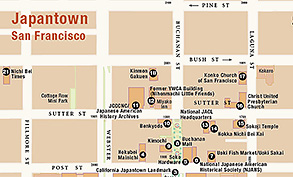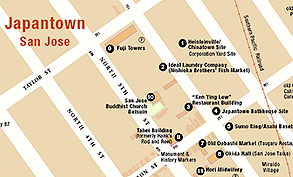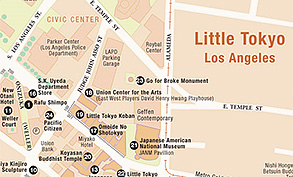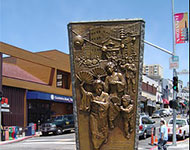
San Francisco’s JapantownFounded in 1906, San Francisco's Japantown was the first Japanese American community to settle and establish itself in the United States. As a community, the neighborhood has continued to evolve, and efforts continue to ensure support for the future viability of the greater Japantown neighborhood for the next 100 years.

San Jose's JapantownIf you walk down Jackson Street in San Jose’s Japantown today, you will experience the increasingly rare feeling of a neighborhood where history and heritage reside in the keepers of the shops and the people walking along the streets. In California, where most other Japanese-American neighborhoods were lost after the internments of World War II, San Jose's Japantown is a rare treasure.

Little Tokyo, Los AngelesLittle Tokyo, in the heart of downtown Los Angeles has undergone significant urban renewal over the past 30 years, much like San Francisco's Japantown. The area was first inhabited in the early 1880s by Japanese laborers lured by the availability of jobs in the railroad and farm industries. Today, Little Tokyo remains a popular tourist attraction for visitors to Los Angeles and a touchstone for the Japanese American community, which commutes in to eat, shop, and attend classes, civic meetings, and religious services. |
||
